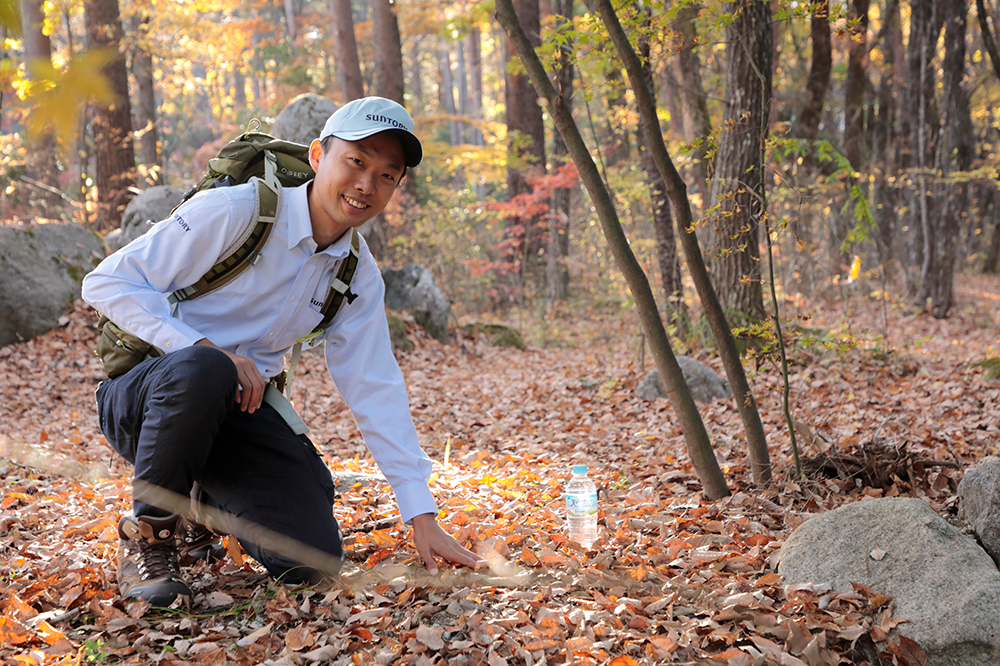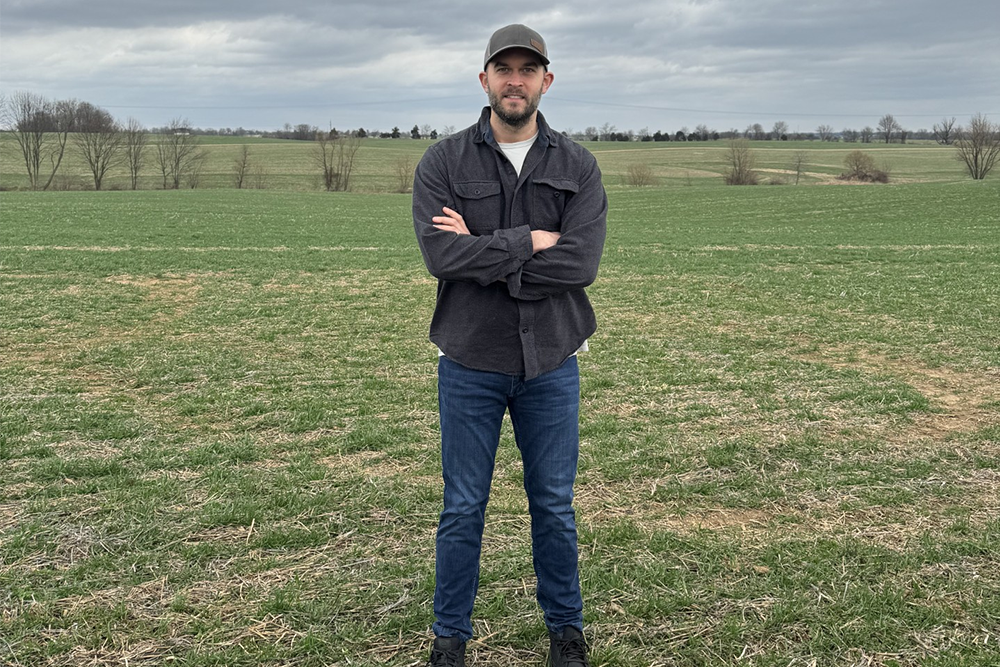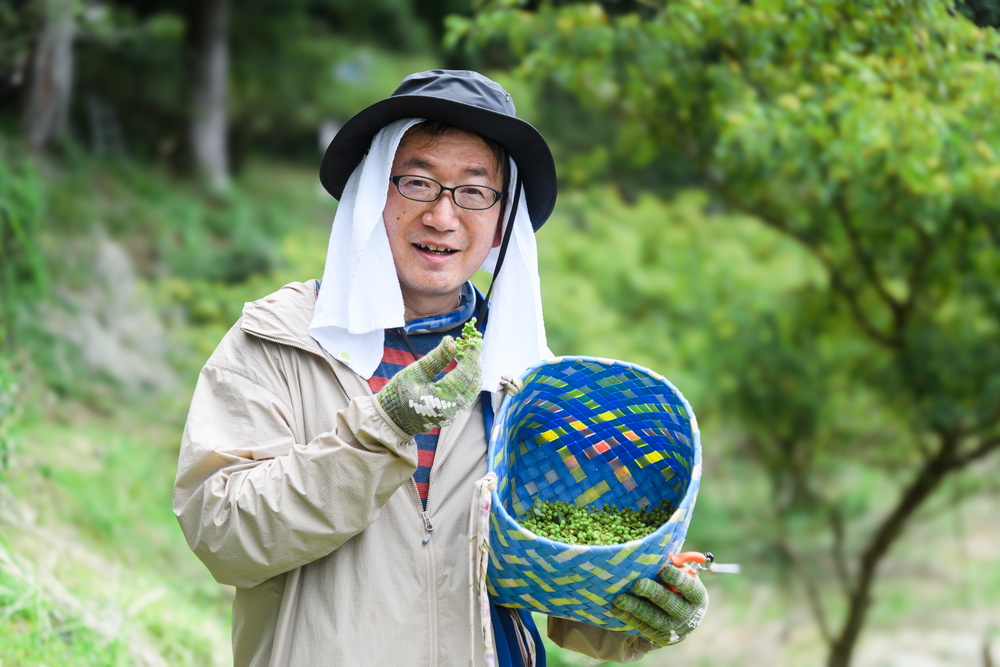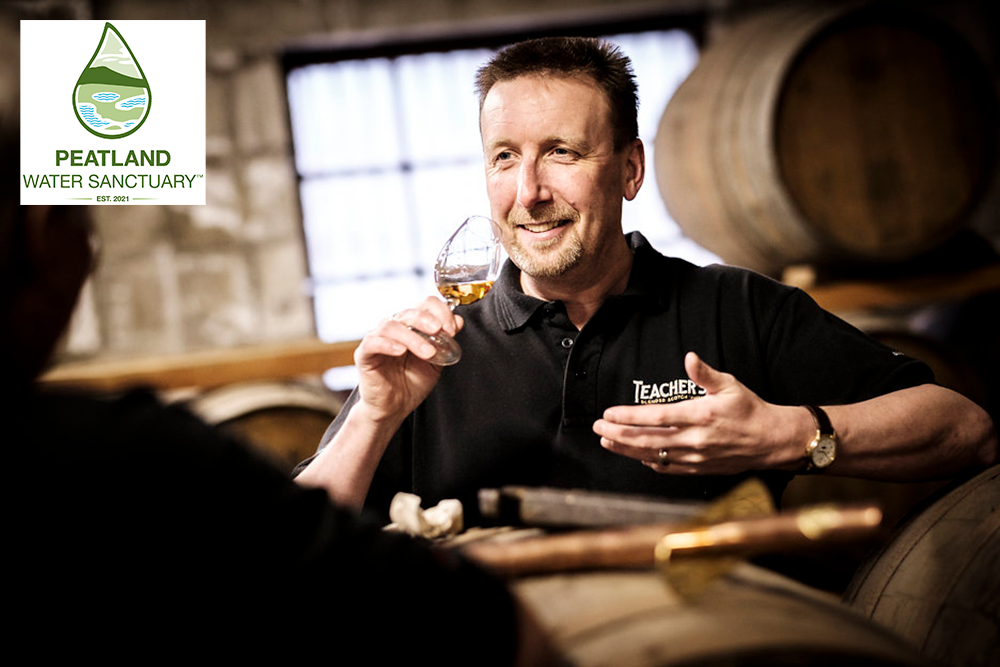- Climate Change
- Raw Ingredients
Saving the Planet with Agriculture: Collaborating with Farmers to Pioneer Regenerative Agriculture
Agriculture is the basis of our raw ingredient procurement. To achieve sustainable procurement on a global scale, we are accelerating our regenerative agriculture efforts, which aim to conserve and restore agricultural ecosystems as crops are grown. Marc Rakoczy is General Manager, Global Supply Solutions of Suntory Holdings and Director, Sustainable and Regenerative Agriculture of Suntory Global Spirits. He introduces the latest developments from Kentucky, USA, the forefront of Suntory’s regenerative agriculture efforts.

Raw Ingredient Procurement Under Regenerative Agriculture, Essential for Meeting 2050 Climate Change-Related Targets
Regenerative agriculture uses sustainable methods to conserve and restore farmland ecosystems, thereby boosting soil health. A distinctive feature of this approach is the practice of planting fields with cover crops and tilling them as little as possible. The cover crop prevents wind and rain from degrading soil that has been fertilized at great effort. Another important role of the cover crop is to help the soil's natural ecological processes to boost soil health without depending on cultivation and fertilizers.

Cover crop field testing under way in a Kentucky corn field.
In addition to reducing energy consumption by agricultural machinery, regenerative agriculture is attracting attention as an effective climate change strategy, since it promotes storage of large amounts of CO2 in the soil through plant roots and microorganisms, and reduces the use of chemical fertilizers, a source of greenhouse gases (GHG). Nitrous oxide gas produced by chemical fertilizers and agricultural chemicals is said to have global warming potential over 300 times greater than CO2, and roughly a quarter of global GHG emissions are related to agriculture and forestry. At Suntory, GHG emissions from raw ingredient procurement using conventional agriculture account for around 20% of the company's total GHG emissions. As such, regenerative agriculture efforts are essential if we are to achieve our announced goal of effective zero GHG emissions across the entire value chain by 2050.

(left) Cover crop field testing with farmers.
(right) Soil core samples being drawn to determine soil health. An agronomist evaluates the soil state and explains measures to better retain water, increase soil organic carbon, and reduce GHG.
Regenerative agriculture itself is not a new concept, but many of its methods, technologies, and tools are not commonplace and in some cases are new. As such, Suntory is collaborating with agronomists and other experts to judge which efforts should be emphasized, to provide advice and education to farmers, carry out repeated field testing in small-scale pilot fields, and otherwise create environments conducive to experimenting with regenerative agriculture, in order to enhance soil health using sustainable methods.
Applying Regenerative Agriculture to Growing Corn, a Key Raw Ingredient
Suntory is currently carrying out regenerative agriculture pilot programs for important raw ingredients in many parts of the world. Our efforts relating to corn, an important raw ingredient in bourbon as well as in syrups for soft drinks, are one such example. Since 2023, I have been helping corn farmers make the transition to regenerative agriculture in Kentucky.
For farmers, abandoning proven conventional agricultural practices poses a risk to their livelihoods. As such, it is important that they feel motivated to collaborate with Suntory to explore unknown territory. We therefore make every effort to visit farmers’ fields and find ways to make incremental changes that are compatible with the nature of the local soil. The pioneering findings of our work with farmers are beginning to demonstrate results in the form of reduced GHG emissions in 2024, the project’s second year.

We are achieving progress by collaborating with farmers in areas such as cover crop testing for effectiveness in corn cultivation.

Healthy corn on a beautiful day in Kentucky. This area is included in our pilot programs to improve soil health and reduce GHG.
The farmers we have been working with have told us, for example, “My family has worked this land for generations. I hope to pass it on my children and grandchildren.” “Through our work on regenerative agriculture, I hope that not only people involved in farming, but consumers around the world will better understand the importance of agriculture and its future.” We plan to expand these regenerative agriculture programs across the globe. The pursuit of regenerative agriculture is an effort that will support farming of the future and the farmers who support it, as well as the future of the planet and Suntory. The conviction that I am helping realize a sustainable future is the driving force that keeps me going on this journey, no matter the difficulties I face.
To help make the world a better place, Suntorians such as myself will continue to assist farmers in agricultural areas where not only corn, but barley, black currants, coffee, sugarcane , and other raw ingredients are grown.

An agronomist shares results of GHG reductions through cover cropping and other measures with a group of farmers participating in the pilot program.
Latest Stories
-

- Enriching Life
- Water
- Raw Ingredients
- Packaging
April 17, 2025
Suntory’s Commitment to “Designing Future Society for Our Lives”: Encouraging New Realizations through Exciting New Experiences at Expo 2025
View More -

March 31, 2025
The Suntory Sign Brings Smiles and a Sense of Unity
View More -

- Climate Change
- Raw Ingredients
Februaly 28, 2025
Shaping the Future of Japanese Wine: Secondary Induced Shoot Cultivation Delivers Delicious Grapes in an Era of Climate Change
View More -

- Water
- Climate Change
Janualy 31, 2025
Bequeathing Water to Future Generations and Conveying Its Importance through Mizuiku, Suntory’s Education Program for Nature and Water
View More -

- Climate Change
- Raw Ingredients
December 25, 2024
Saving the Planet with Agriculture:Collaborating with Farmers to Pioneer Regenerative Agriculture
View More -

- Climate Change
- Raw Ingredients
October 11, 2024
The Key for Domestically Producing Sustainable Botanical Raw Materials: Glocal Branding
View More -

- Water
- Climate Change
- Raw Ingredients
June 7, 2024
The Peatland Water Sanctuary™ Initiative: For Peat, an Important Ingredient in Whisky, and for the Future of the Planet
View More -

- Enriching Life
April 30, 2024
Enhancing the Foundation of Parasports with the Suntory Challenged Sports Project
View More -

- Human Rights
- Packaging
- Climate Change
April 30, 2024
In 2024 We Are Launching an Overseas Training Program for All Second-Year New-Graduate Hires!
View More -

- Raw Ingredients
- CO2
- Biodiversity
November 30, 2023
Protecting UK Blackcurrants and Their Growers: Sustainable Agriculture Support Program
View More -

- Human Rights
September 29, 2023
Being the Best Company for Employees with Disabilities to Shine
View More -

- Water
July 31, 2023
Suntory Mizuiku – Education Program for Nature and Water Expands Globally: Stories from Asia
View More -

- Health
June 29, 2023
New DRINK SMART Ambassador Program: Internal Certification to Deliver the DRINK SMART Message to More Customers
View More -

- Raw Ingredients
- CO2
June 29, 2023
Circular Agriculture Initiatives at Tominooka Winery in Japan (Part 2)
View More -

- Biodiversity
May 10, 2023
Suntory Bird Conservation Activities Are Turning 50: A Look at the Past and the Future (Part 2)
View More -

- Raw Ingredients
- CO2
April 27, 2023
Circular Agriculture Initiatives at Tominooka Winery in Japan (Part 1)
View More -

- Health
April 27, 2023
Creating “Friends for Moderate Consumption,” a Campaign Character to Promote Responsible Drinking
View More -

- Packaging
April 27, 2023
B to B Recycling: Creating New PET Bottles from Used Bottles
View More -

- Human Rights
April 27, 2023
SUN-co-NEsT, An Online Community Aiming to Balance Work and Parenting
View More -

- Biodiversity
April 27, 2023
Suntory Bird Conservation Activities Are Turning 50: A Look at the Past and the Future (Part 1)
View More -

- Water
- Biodiversity
April 27, 2023
Protecting the Forests That Nurture Abundant Water: Suntory Natural Water Sanctuary Initiative
View More
